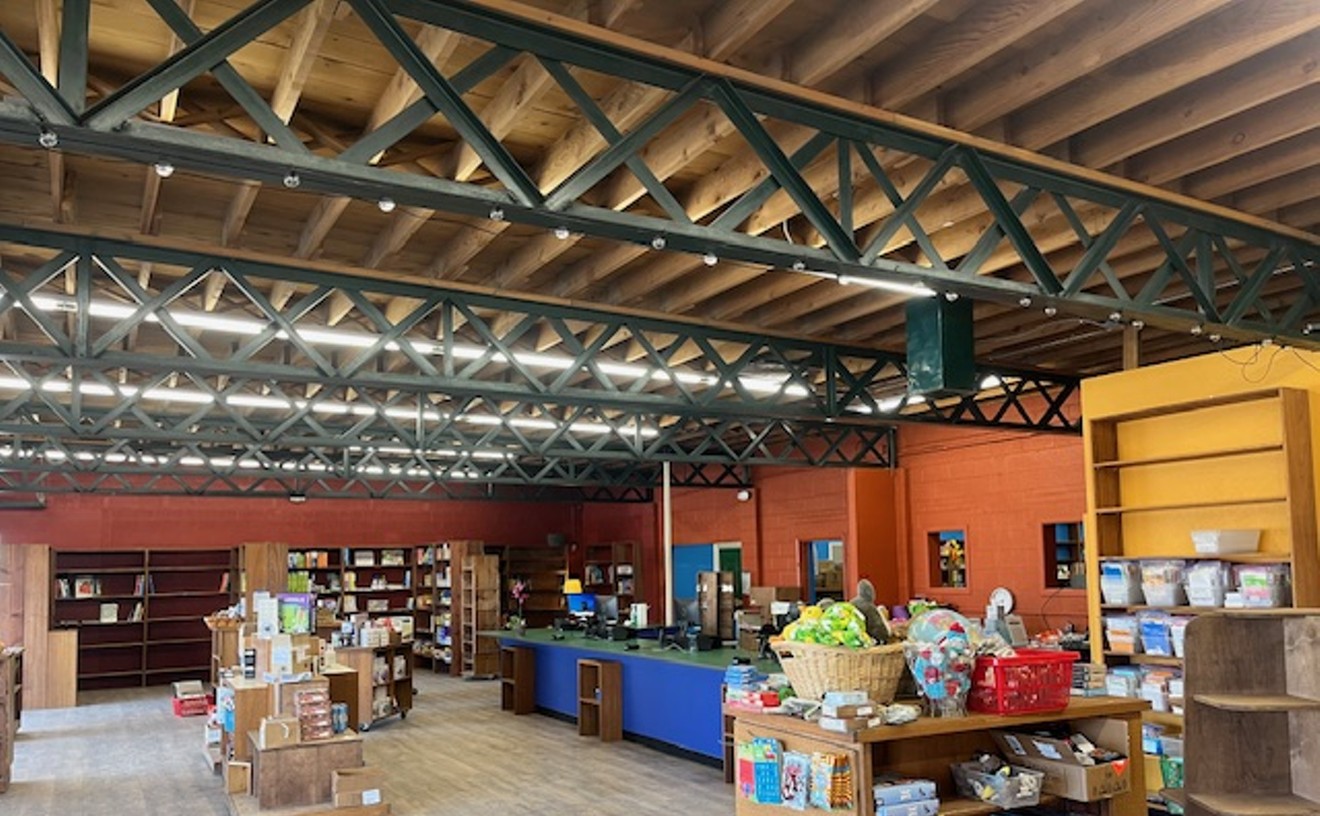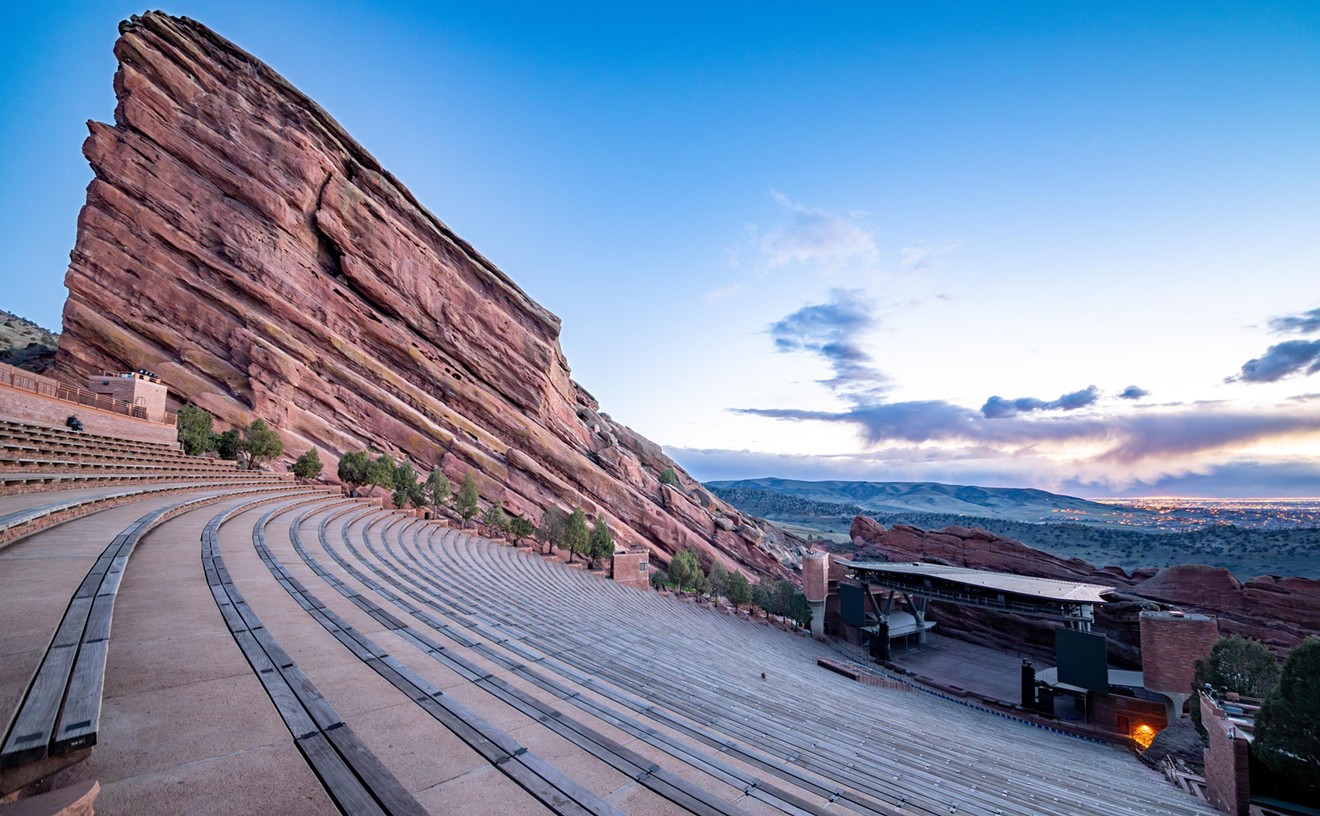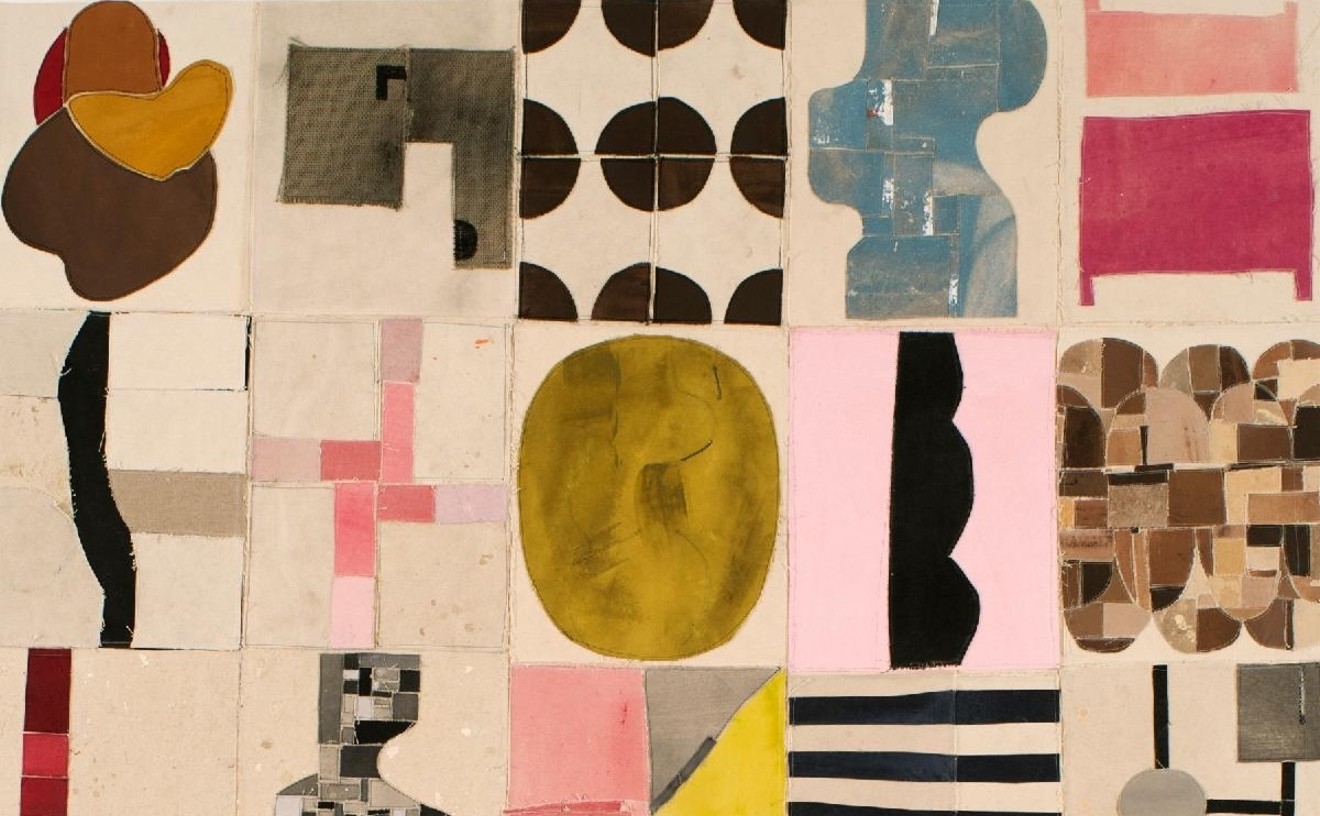Except for a few holdouts, the board liked the idea, and a selection committee was formed to pick the artist. Dickinson insisted the person be a contemporary sculptor, despite the fact that in Golden -- and on the Foothills board -- there are those who support traditional sculpture. "I think nostalgic sculptures are appropriate to a town in the West like Golden," says Dickinson, referring to the dozens of Western-style bronzes found around the city. "But I love contemporary sculpture above all else, and I wanted Foothills to close the circle with contemporary sculpture, to bring Golden into the 21st century."
Dickinson, who's a take-charge kind of gal, chose Jesús Moroles, whom she had known and admired for years. They first met in 1992, when he was serving as a juror for the North American Sculpture Exhibition and she had been director for one week. Dickinson presented Moroles to the selection committee as more or less of a fait accompli. Impressed, the committee acquiesced to Dickenson's choice. "I see in Jesús's work a storied feeling," Dickinson says. "There's monumentality, a less-is-more sensibility. There's the material revealing itself. Everything I love about sculpture. It does what all great art does: reaches beyond itself to something greater."
Moroles was born in Corpus Christi, Texas, in 1950; he lives and works just a few miles down the Gulf Coast. He received a BFA from North Texas State University in 1978, an inauspicious start to an auspicious career. In 1979 and into 1980, he studied in Carrara, Italy, and the effect of this experience is still easy to see in his work. Moroles began to make a name for himself in the early 1980s with neo-modernist sculpture, often installed outdoors, that mixed minimalism with classicism. His material of choice has always been stone, typically left rough or with alternating rough and smooth effects, which he believes gives life to his pieces. In the past quarter-century, Moroles has done commissions around the world, and his work is in many prominent private and public collections.
In May 2003, Moroles came to Golden and made a presentation to the board for the Carol and Don Dickinson Sculpture Garden. Dickinson recruited Ted Shultz, a former Foothills board president and a practicing architect, and landscape architect Susan Saarinen to form a design team for the garden. Moroles created two sculptures and a matching fountain that are collectively titled "Granite Aspens," along with a table and benches; Shultz took on the technical responsibilities of producing the drawings; and Saarinen designed the walls, stairs, ramps and patio as well as choosing and placing the plantings.
The site selected for the garden is on 15th Street, at the front entrance to Foothills, which is a complex of historic buildings anchored by a red-brick Gothic Revival-style church. It's too bad that this particular site was chosen, because the existing garden was quite lovely and perfectly matched with the character of the buildings and the town. The loss of some large evergreens to make way for a staircase was even more unfortunate. But Foothills wanted to kill two birds with one stone, and with the new garden in this location, the space doubles as a forecourt for the new main entrance, providing additional room for community events. Not only that, but there was a desire to provide a link to Washington Street, Golden's main drag, and the evergreens blocked the view.
The Carol and Don Dickinson Sculpture Garden was unveiled a couple of weeks ago, just over two years from when the plan was first hatched. The Dickinsons were in attendance, as was a key donor, Nancy Tieken, who picked up the entire cost of the Moroles sculptures. Other donors to the $300,000-plus project include Sue and Greg Stevinson, Clive Cussler, Merle Chambers and Hugh Grant, and Sally and Ray Duncan, among others. Current Foothills director Jenny Cook was also able to get money from civic groups in Golden and assemble crews of volunteers to do much of the work on the garden.
The Saarinen site plan of the garden is meant to connect the center both to Washington Street, via the grand staircase on the steep hill on that side, and to 15th Street. The staircase and the walls are all curved and done in cast-in-place concrete with structural ribs that run vertically. Volunteers used hammers and chisels to knock off the smooth top layer of these ribs, revealing stripes of the rough aggregate underneath. In this way, the walls mimic the texture of Moroles's sculptures, which are placed at the top of the staircase. Saarinen's plantings will need some time to come into their own, but some of them, like the trees screening the sculptures, already look good.
The two sculptures and the matching fountain are essentially alike, all featuring tall, narrow pillars with vertical grooves separating stripes of rough-cut pink Texas granite. They are arranged in a triangle, with the fountain, in which water runs down the grooves, at the top point. Moroles, who attended the opening ceremony, remarked on how quickly things had come together and how happy he was with the final product. "I do these kinds of things all the time," Moroles said, "but it usually takes five or six years to go through the process, so this one was a pleasure." Moroles was particularly pleased with how the concrete looked with the surface of the ribs knocked off. "We didn't even know if it would work," he recalls with a laugh. "As far as I know, it's never been done before." But it worked, and it succeeds in bringing the rest of the garden into the realm of the three Moroles pieces, as do the pink-granite slabs that form benches on top of some of the retaining walls.
There are plans to add more sculptures to the composition in the future, and I hope the choices are judicious and complement the Moroles works. Because the garden is so simple, it would be easy to screw it up.
Carol Dickinson wanted to create a lasting monument that would enrich Foothills Art Center and the town of Golden. I think it's safe to say that she got her wish.
If Golden has been enriched by a sculpture garden, I'm afraid Denver may soon be impoverished because of a park. Something rotten is cooking, and it could spell disaster for the Denver Landmark Preservation Commission. The commission, as weak as it is, remains the city's only bulwark against unchecked development in areas rich with old buildings.
What's happening has to do with Bell Park, an ugly little block at Larimer and 14th streets just off Speer Boulevard that's named for the old bell that once occupied the top of the former city hall's tower. Most of the block is given over to surface parking lots, but it's adjacent to Larimer Square, the city's premier collection of late-nineteenth-century commercial buildings. As a result of some kind of snap judgment made decades ago, Bell Park was declared part of the Lower Downtown Historic District. And since the landmark commission oversees changes in such districts, it has gotten involved in the recent debate over the area's future.
Believe it or not, the unrest starts with the new Justice Center that is to be built on West Colfax Avenue next to the United States Mint. The land needed for the buildings is in various lots owned by different people, and the city must acquire each parcel before it can begin construction. That's where Bell Park comes in. Developer Richard Geller owns one of those pieces of land, and the city offered to trade Bell Park, which it owns, for Geller's lot. But Geller wanted Bell Park out of the Lower Downtown Historic District before he agreed to the trade. He needed that to happen so that he could build a thirty-story-plus high-rise that would not be allowed under the district's current 55-foot height restriction. But last month, the landmark commission voted against severing Bell Park from lower downtown.
The city administration clearly has a vested interest in making the trade, and, in fact, took the initial request to the landmark commission. Mayor John Hickenlooper has since stepped back and deferred to his planning chief, Peter Park, who endorses the high-rise idea.
So here's the scary part: Three members of the Denver City Council -- Judy Montero, Elbra Wedgeworth and Jeanne Robb -- got their knickers in a twist over the landmark commission's decision, and they've declared war on the distinguished panel of experts. In a fit of pique, Montero has even announced that she wants to form a task force to look into the activities of the landmark commission! I think these three stooges should be ashamed of themselves for their petulant behavior. (For politicians, though, I'm afraid shame is a little-known commodity.)
Even during the Wellington Webb administration -- dark days indeed for historic preservation -- there was no talk of destroying the landmark commission, even though it was often on opposite sides from the city, particularly in advocating for the preservation of I. M. Pei's Zeckendorf Plaza and Burnham Hoyt's Boettcher School.
On a personal note, I think the landmark commission was wrong in not severing Bell Park from the Lower Downtown Historic District. After all, there are no historic structures there, and it's at the edge of the district. Maybe some kind of compromise can be worked out in the near future.
But that doesn't excuse the behavior of Montero, Wedgeworth and Robb, or any other councilmember who agrees with the offensive idea of an investigative task force as a way to slap the landmark commission -- or worse, to rob it of what little real power it has.










